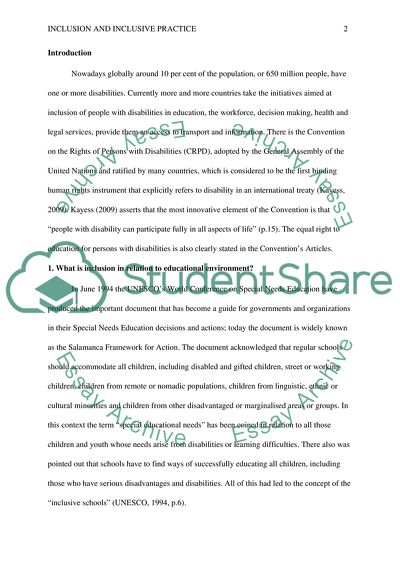Cite this document
(Inclusion in Relation to the Educational Environment Assignment Example | Topics and Well Written Essays - 1750 words, n.d.)
Inclusion in Relation to the Educational Environment Assignment Example | Topics and Well Written Essays - 1750 words. https://studentshare.org/education/1735558-discussion-paper-inclusion-and-inclusive-practices
Inclusion in Relation to the Educational Environment Assignment Example | Topics and Well Written Essays - 1750 words. https://studentshare.org/education/1735558-discussion-paper-inclusion-and-inclusive-practices
(Inclusion in Relation to the Educational Environment Assignment Example | Topics and Well Written Essays - 1750 Words)
Inclusion in Relation to the Educational Environment Assignment Example | Topics and Well Written Essays - 1750 Words. https://studentshare.org/education/1735558-discussion-paper-inclusion-and-inclusive-practices.
Inclusion in Relation to the Educational Environment Assignment Example | Topics and Well Written Essays - 1750 Words. https://studentshare.org/education/1735558-discussion-paper-inclusion-and-inclusive-practices.
“Inclusion in Relation to the Educational Environment Assignment Example | Topics and Well Written Essays - 1750 Words”. https://studentshare.org/education/1735558-discussion-paper-inclusion-and-inclusive-practices.


